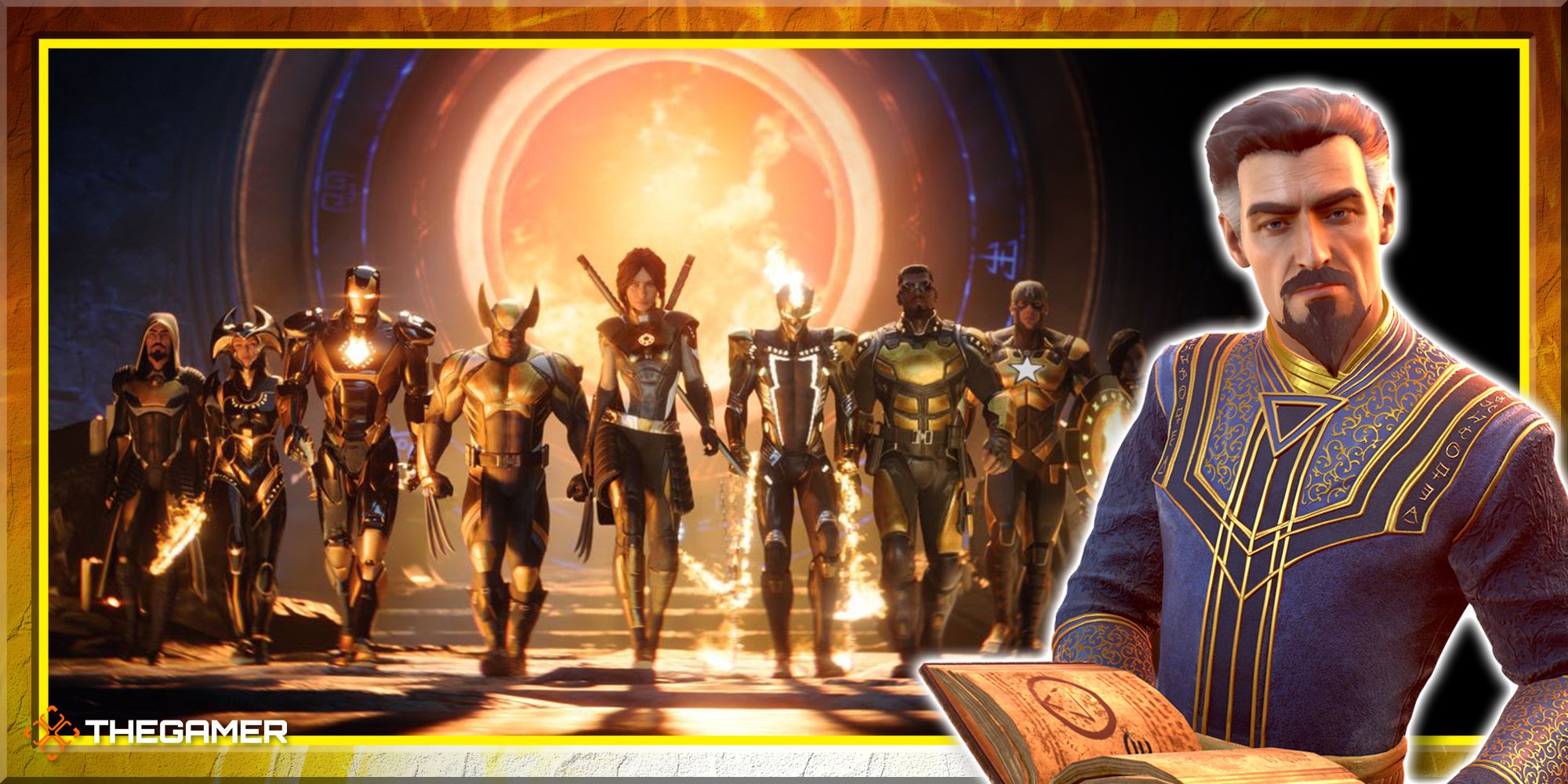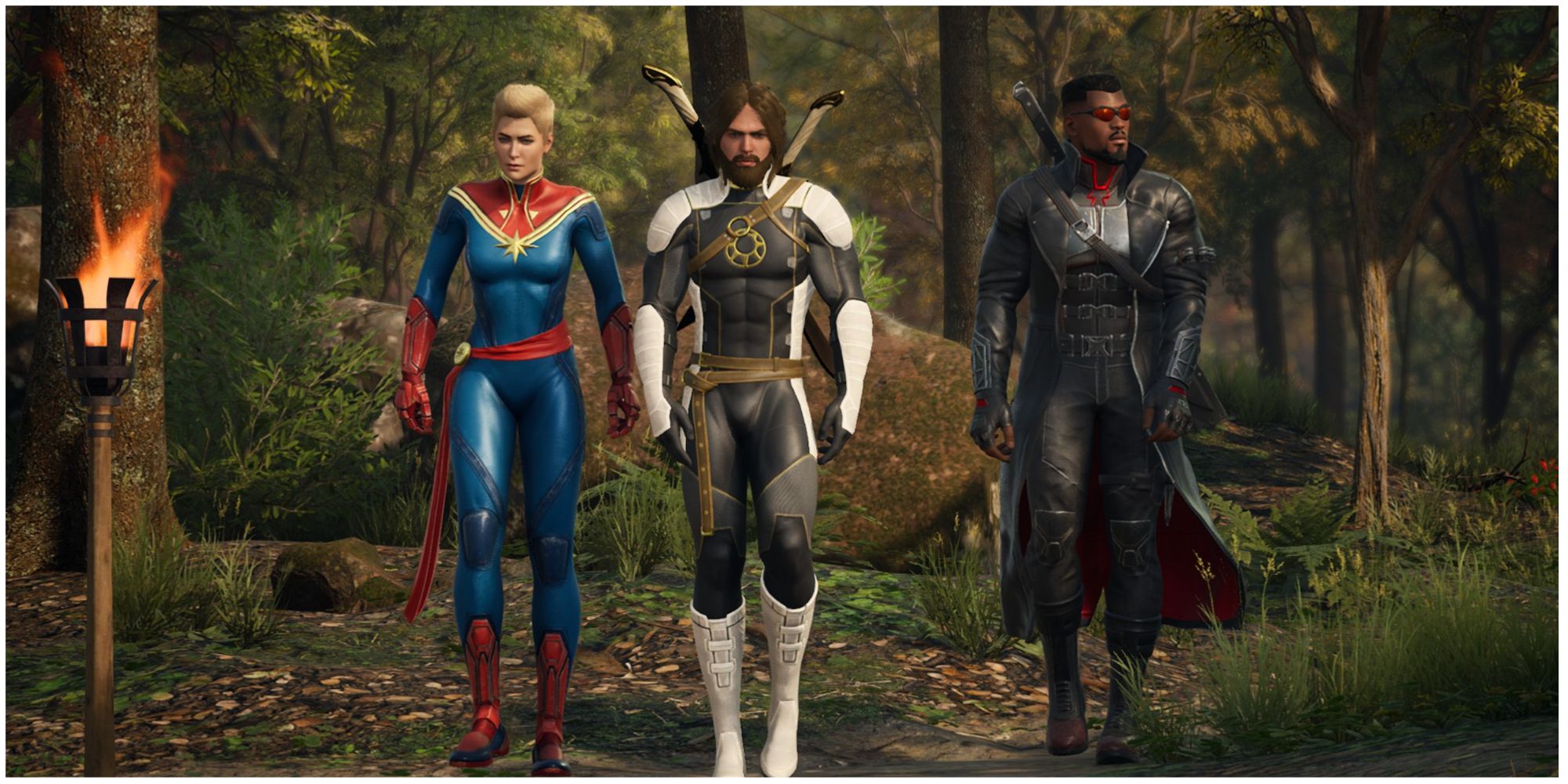For comic book fans, Marvel’s Midnight Suns is the ultimate superhero team-up game. Its skirmish-sized combat missions pits teams of three heroes against Hydra and undead forces, and it’s up to you to decide which characters will be on your team. MCU fans will love to see Captain America, Iron Man, and Spider-Man fighting together again, while those fond of the mystic side of Marvel might put Doctor Strange, Nico Minoru, and Scarlet Witch together instead. Even with just 13 characters to choose from, there are 286 different teams you could build.
I spent a long time thinking about how to build the perfect team before I played Midnight Suns. Wolverine, Magik, and Scarlet Witch seem like a natural fit, seeing as at one point they were all mutants (I don’t have time to get into it) but I also just considered putting Blade, Spider-Man, and Ghost Rider together, since they’re three of my favorites. I figured Nico and Captain America probably weren’t going to get much use, but Doctor Strange would have to factor in somewhere. I haven’t thought this much about superhero teams since I was a kid playing with action figures, and I hoped actually playing Midnight Suns would give me the same feeling.
My expectations were shattered pretty quickly upon starting the game, and at first I was thoroughly disappointed. The first wrench in the equation is The Hunter, the protagonist of Midnight Suns, your personal OC, and a mandatory team member for all campaign missions. Right away, my dreams of assembling the perfect Marvel team were dashed on the rocks as I was forced to include this made up character I didn't know and didn’t care about. I was expecting to form my favorite trio, but now it’s just a duo - and also The Hunter is there, I guess.
Outside of story missions, things are a little more flexible. The Hunter isn’t mandatory in side missions, but every mission still has one mandatory hero. If the stars align and you find a side mission with the rewards you’re after, the right difficulty, and the right required hero, you can still make your dream team. You might find yourself in that situation a handful of times across Midnight Sun’s 60+ hour campaign, but by and large you’re going to have to bring along whichever hero the situation demands and make peace with the fact that you don’t have full control over your team. The toy box is full of action figures, but there’s someone telling you which ones you have to play with, and one of them is a dollar store knockoff called Hero Man.
But, slowly but surely, the intention behind this off-putting choice became clearer. The first turn came when I started to understand The Hunter’s role more. The character has a history and relationships that are integral to the plot, but they’re also positioned as a cypher for the player. Through your interactions, the way you choose to engage with the other heroes, and the choices you make, you will start to shape who your version of The Hunter is. Over time you will form friendships, rivalries, and memories with the Marvel heroes. When you take the Hunter and two other heroes on missions, it doesn’t feel like three Marvel heroes, it feels like you and two of your close friends.
It also helps that The Hunter’s combat style is so versatile. While the other heroes fight as you would expect them to, The Hunter can be a healing support character, a lethal assassin, a stocky tank, or anything in between. Your choices inform the kind of hero The Hunter becomes, and you can build them to fill whatever role your team needs most. This flexibility means you can bring any two heroes along, whether they have naturally strong synergies or not, and The Hunter can fill in the gaps and make them a strong team.
Sometimes you still want the fantasy of seeing just your favorite Marvel heroes fight together, which the side missions deliver. And while I was initially frustrated with being told I had to use a certain hero, I eventually discovered this was to my own benefit too. Part of it is the value of encouraging experimentation and discovery. One of the coolest combos you can pull is with Ghost Rider and Magik. Ghost Rider can create open hell pits in the battlefield, and Magik can use her portals to push enemies into them. I may not have ever discovered that synergy if I wasn’t forced to use those characters from time to time, and I’ve found a lot of other fun combos the exact same way. Since my roster is constantly changing, the battles always feel fresh and there’s always another opportunity to discover something you didn’t see before.
There’s another, even more compelling reason to mix and match your teams, but it doesn’t pay off until you’re many, many hours into the campaign. Midnight Suns’ roster is an eclectic group of heroes that don’t all have a lot of history together, and the culture clash and drama of putting all these characters under one roof is a huge element of the story. The experienced Avengers don’t trust the young heroes to handle themselves in an apocalypse, making the young heroes feel disrespected and sidelined. Ageism, class disparity, magic vs. science, psychological trauma, and big, superhero-sized ego all play a role here - and somehow Tony Stark is always at the center of every conflict.
To save the world, this group of uncooperative heroes has to learn to work together, and it falls on you to show that to them. The reason Midnight Suns never lets you pick a main team is because there is only one team - the Midnight Suns - and everyone has to be on it. You wouldn’t get the satisfaction of bringing everyone together if you could just pick three heroes and stick with them the entire game. Firaxis knew better than me what I wanted out of Marvel’s Midnight Suns, and for once, I’m glad I was wrong.


